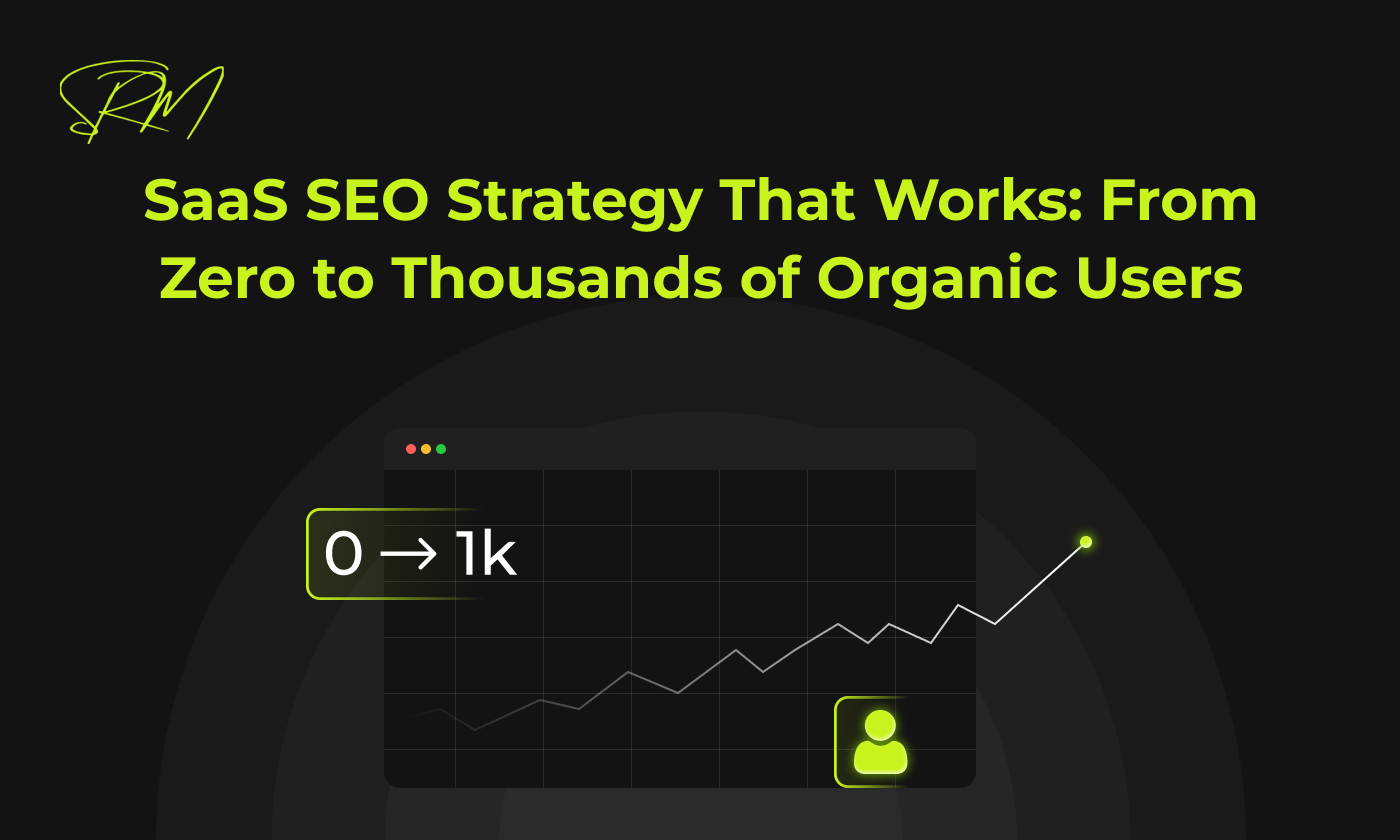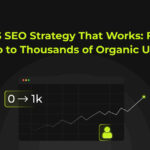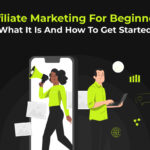
In the world of SaaS (Software as a Service), competition is tough and getting new users through paid ads is becoming more expensive. Relying only on ads is not a smart way to grow anymore. If you want to grow your business in a cost-effective and steady way, SEO (Search Engine Optimization) can help.
SEO brings people to your website without paying for every click. It helps your content show up on Google when potential customers are searching for answers or solutions. Unlike ads, SEO keeps working over time and builds trust with your audience.
SaaS SEO focuses on optimizing your website and content specifically for the SaaS industry. It targets the right keywords that your potential users are searching for and creates helpful content to guide them through every step of their buying journey. This way, you attract more qualified traffic that is likely to convert into paying customers.
What is SaaS SEO?
SaaS SEO refers to the strategic process of optimizing a Software-as-a-Service (SaaS) website to rank higher in search engine results pages (SERPs). The ultimate goal is to drive qualified organic traffic, users actively searching for the solutions your software provides.
Unlike traditional SEO, SaaS SEO focuses on attracting both informational and commercial intent traffic. It involves a tailored approach that includes:
- Keyword research focused on pain points, features, and industry terms
- Technical optimization of your website’s structure, speed, and mobile experience
- Content marketing targeting various stages of the customer journey
- On-page optimization to ensure each page is properly indexed and ranked
- Backlink building to establish domain authority and trustworthiness
By implementing SaaS-specific SEO tactics, companies can attract users who are not only interested in information but are often ready to sign up for a demo, trial, or purchase.
Benefits of SEO for SaaS Businesses
SEO offers many advantages that can help SaaS companies grow sustainably. It not only drives targeted traffic to your website but also helps build brand credibility and trust over time. With the right SaaS SEO strategy, you can attract high-quality leads and reduce your reliance on paid advertising.
1. Consistent, Qualified Traffic
One of the biggest advantages of SaaS SEO is the ability to generate consistent, high-quality traffic. When your content ranks for relevant search terms, you attract users with genuine interest in your product—meaning they are more likely to convert into leads or paying customers.
2. Lower Customer Acquisition Costs
Paid advertising requires continuous investment. Once the ads stop, the traffic disappears. SEO, on the other hand, provides a lower-cost alternative that scales. Well-optimized content and landing pages continue to drive traffic long after they’re published, lowering your overall customer acquisition cost over time.
3. Builds Long-Term Brand Authority
Appearing in the top search results through effective SaaS SEO positions your brand as an industry leader. Users tend to trust websites that consistently rank high, making SEO a powerful tool for building credibility and brand recognition.
4. Supports the Entire Sales Funnel
SaaS SEO isn’t just about traffic. It supports every stage of the customer journey. Top of funnel blog content educates potential users, middle of funnel comparison pages help them evaluate your product, and bottom of funnel content drives final decision making.
5. Sustainable Growth and Scalability
Unlike paid marketing, SEO is an asset that grows over time. As your site gains more authority, your rankings improve across a broader set of keywords. This compounding effect helps you scale your marketing efforts without scaling your budget at the same rate.
Ready to Grow Organically?
Learn the SEO Strategy that Took Us from
0 to Thousand of Users.
Ready to Grow Organically?
Learn the SEO Strategy that Took Us from 0 to Thousand of Users.
Ready the Full StrategyWhy SEO is Important for SaaS
SaaS businesses operate in highly competitive markets where being discoverable online is critical. Without strong SaaS SEO, your potential customers might never find you or, worse, they might end up with your competitors. Here are a few reasons why SaaS SEO is essential for SaaS companies:
- Your audience is searching for software solutions online daily
- High ranking content drives brand awareness, trust, and leads
- SaaS SEO allows you to compete with larger players by earning visibility organically
- It enhances the value of other marketing channels (such as email and social) through better content and user insights
Moreover, SaaS SEO data provides invaluable insights into your audience’s behavior, allowing you to continuously refine your product messaging, content strategy, and positioning.
SaaS SEO Strategy That Works: Step by Step Breakdown
Here’s how to create and scale a SaaS SEO strategy for your SaaS product that works:
Step 1: Know Your Audience and Their Search Intent
Identify who your ideal customer is and what problems they’re searching online. Use keyword research tools to map keywords to each stage of the funnel: awareness, consideration, and decision. Understanding your audience’s intent helps you create the right content that answers their questions at the right time. This targeted approach increases your chances of attracting qualified traffic and turning visitors into paying users.
Step 2: Structure Your Site for Growth
Your website should be easy to navigate, fast, mobile friendly, and fully optimized for SaaS SEO. Include key pages like:
- Feature pages for each core offering
- Solution pages for specific industries or use cases
- Blog categories grouped by topic
- Landing pages targeting bottom-funnel terms
Step 3: Create Full-Funnel Content
To attract and convert users, you need content for each stage of the customer journey:
- Top of Funnel: Informational blog posts, how to guides, industry trends
- Middle of Funnel: Use case articles, solution comparisons, templates
- Bottom of Funnel: Product pages, pricing, demo request pages, competitor comparisons
This content not only attracts organic visitors but also educates and nurtures them.
Step 4: Build High-Quality Backlinks
Links from reputable websites boost your authority and help your content rank. Focus on:
- Guest posting on relevant blogs
- Creating data driven or visual content others want to reference
- Building relationships for co-marketing and digital PR opportunities
Step 5: Analyze, Improve, and Scale
Use tools like Google Search Console, Ahrefs, or Semrush to track performance. Regularly update your top-performing pages and identify opportunities to improve underperforming content.
Essential Tools for SaaS SEO Success
Here’s a list of tools that can help you execute and refine your SaaS SEO strategy effectively:
- Ahrefs / Semrush – Keyword research, backlink analysis, site audit
- Google Search Console – Monitor search performance, indexing, and technical issues
- Google Analytics – Understand traffic behavior and measure conversions
- Surfer SEO / Frase.io – Content optimization based on SERP analysis
- Screaming Frog / Sitebulb – Technical SEO audits and site structure evaluation
- Answer the Public / AlsoAsked – Discover user questions and intent
- Hotjar / Microsoft Clarity – Visual insights into user behavior
- Notion / Trello – Manage content calendars and SEO tasks
These tools are not all required at once, but incorporating a combination that fits your workflow can greatly enhance your effectiveness and efficiency.
Final Thoughts
SEO is one of the most powerful and cost-effective marketing channels for SaaS businesses. While it requires effort and patience, the long-term results are worth it: steady traffic, lower acquisition costs, and stronger brand visibility.
By following a focused and strategic SaaS SEO approach that aligns with your audience, answers their questions, and positions your product as the solution, you can go from zero to thousands of organic users and build a lasting competitive advantage.
Start investing in SaaS SEO today. The traffic and growth you generate tomorrow will be worth it.



